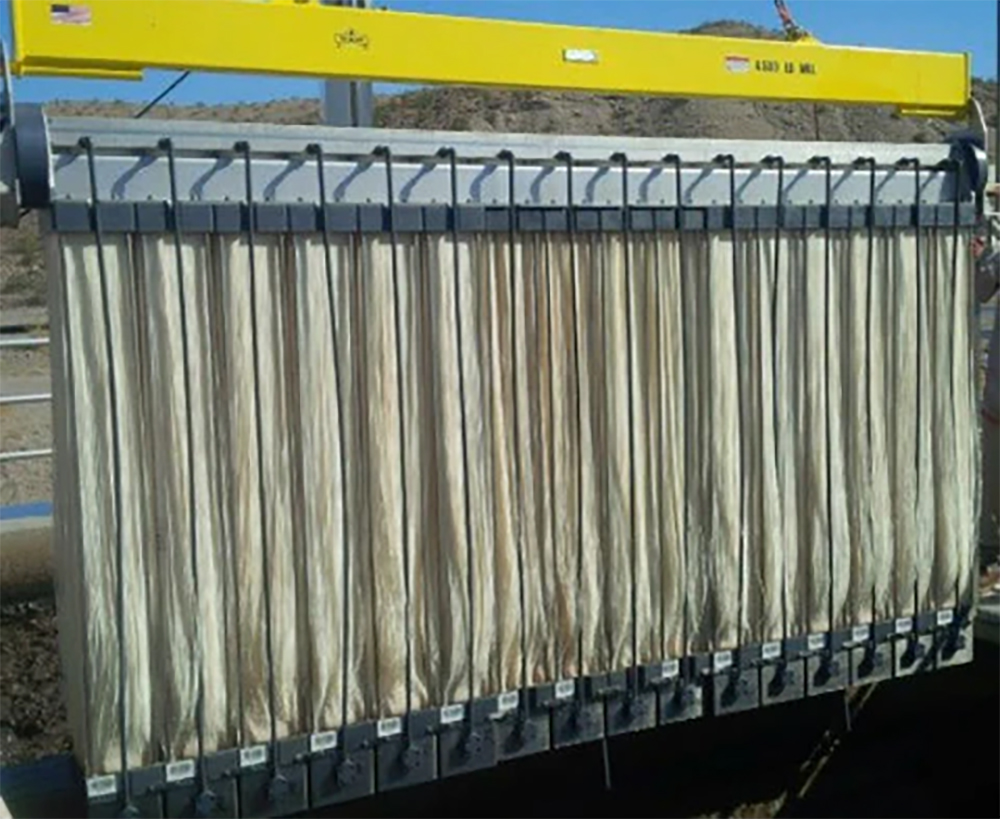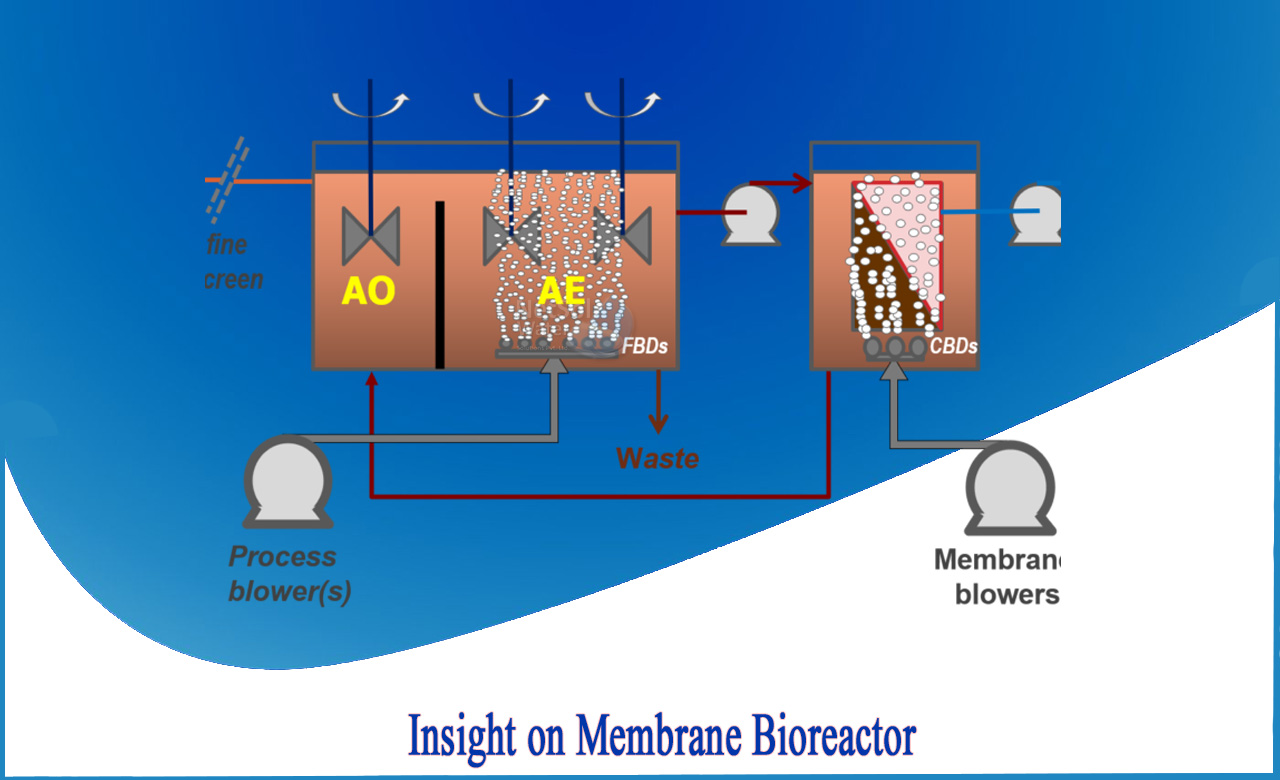The Advantages of Using a Membrane Bioreactor for Efficient Water Purification
The Advantages of Using a Membrane Bioreactor for Efficient Water Purification
Blog Article
How Membrane Bioreactors Are Reinventing Water Filtration Equipments
The introduction of membrane bioreactors (MBRs) represents a substantial advancement in the area of water filtration, combining biological treatment processes with cutting-edge membrane layer filtering modern technologies. This integration not just enhances the top quality of dealt with effluent yet likewise addresses city space constraints, making MBRs particularly appropriate for densely inhabited locations. As global water shortage heightens, the duty of MBRs in promoting drinkable water reuse and lasting water management ends up being progressively essential. The effects of this innovation extend past effectiveness-- what challenges and opportunities lie ahead for its prevalent application?
Introduction of Membrane Layer Bioreactors
Membrane bioreactors (MBRs) represent a considerable innovation in water purification modern technology, as they combine organic therapy processes with membrane layer filtration. This combination enhances the efficiency of wastewater treatment by utilizing bacteria to deteriorate natural toxins while at the same time employing semi-permeable membranes to separate treated water from put on hold solids and virus.
The MBR system typically is composed of an organic activator where the microbial population metabolizes contaminants, adhered to by a membrane layer filtering unit that keeps biomass and enables only tidy water to go through. This double functionality results in greater effluent top quality contrasted to standard therapy methods. MBRs can be run in both batch and continual circulation modes, offering flexibility in layout and application.
In Addition, MBRs are identified by their small footprint, making them suitable for city settings with room restraints. Membrane Bioreactor. They additionally allow the recovery of water for reuse, hence adding to water sustainability efforts. While MBR modern technology has actually gotten popularity in local and industrial applications, its functional intricacies and energy demands require careful factor to consider during execution. Generally, MBRs go to the center of enhancing water treatment efficiency and quality, showcasing the potential for innovative solutions in environmental management.
Advantages of MBR Technology
The assimilation of biological treatment with membrane filtration uses countless advantages for water filtration procedures. One of the main benefits of Membrane Bioreactor (MBR) innovation is its capacity to efficiently remove both inorganic and organic pollutants, leading to high-quality effluent. The membranes serve as a physical barrier, avoiding put on hold solids and microorganisms from going through, which boosts the general safety and reliability of treated water.
Additionally, MBR systems call for a smaller sized impact compared to traditional therapy methods, permitting more efficient area use. This portable design is especially helpful in city setups where land is limited. MBRs also show operational flexibility, suiting differing influent high qualities and flow prices without significant efficiency deterioration.
Moreover, the process provides enhanced nutrient removal capabilities, especially for nitrogen and phosphorus, which are critical for preventing eutrophication in getting waters. The reduced sludge production connected with MBR innovation additionally converts to lower disposal prices, making it an economical solution in the long run - Membrane Bioreactor. In general, the benefits of MBR modern technology placement it as a leading option for innovative and lasting water purification systems, addressing both environmental and financial issues
Applications in Water Filtration
Applications of Membrane Bioreactor (MBR) modern technology in water filtration are impactful and varied, attending to numerous therapy needs across multiple markets. MBRs successfully integrate biological treatment processes with membrane filtration, making them excellent for community wastewater treatment, industrial effluent administration, and also drinkable water reuse initiatives.
In community setups, MBRs are progressively used to boost the high quality of dealt with wastewater, enabling compliance with rigid have a peek at these guys discharge laws and assisting in the recycling of water for irrigation and non-potable usages. Their portable layout additionally makes them appropriate for metropolitan settings where area is limited.
Industrially, MBR modern technology is utilized to treat procedure water and wastewater, specifically in fields such as food and drink, drugs, and fabrics. By successfully getting rid of pollutants and put on hold solids, MBRs assist industries decrease ecological effects while recovering useful resources from wastewater streams.
In Addition, MBRs are gaining grip in decentralized water treatment applications, where small systems can be deployed in remote areas or establishing areas. This versatility enables neighborhoods to achieve lasting water monitoring services, enhancing access to tidy water while minimizing advice reliance on traditional treatment methods.
Situation Studies and Success Stories

In one more example, a fabric manufacturing center in Bangladesh embraced MBR modern technology to address its wastewater obstacles. The system minimized chemical oxygen demand (COD) levels from 1,200 mg/L to much less than 100 mg/L, therefore satisfying regulatory criteria and dramatically decreasing ecological effect.
The University of Cape Town's MBR setup has shown efficient in treating greywater for non-potable reuse on campus. This project not only saves safe and clean water however likewise functions as an instructional model for lasting practices.
In addition, a fish and shellfish processing plant in Norway used MBR modern technology to treat effluents having high levels of organic matter, attaining over 90% pollutant removal. These study emphasize MBR innovation's flexibility and its important function in boosting water top quality across varied applications.
Future of Water Treatment Solutions
As global water scarcity and air pollution difficulties heighten, innovative water treatment options are becoming increasingly necessary to ensure sustainable accessibility to tidy water. The future of water treatment depends on the integration of sophisticated modern technologies that enhance the efficiency and efficiency of purification procedures. Membrane layer bioreactors (MBRs) are at the leading edge of this advancement, combining organic treatment with membrane layer purification to produce high-quality effluent ideal for different applications.

Emerging trends such as source healing from wastewater, consisting of nutrients and power, will additionally change therapy centers right into eco-friendly centers. Developments in nanotechnology and membrane products promise improved performance and long life of filtration systems.

Verdict
To conclude, membrane bioreactors represent a considerable development in water filtration technologies, effectively incorporating organic therapy with innovative membrane layer filtering. The various benefits, consisting of boosted effluent quality and minimized spatial requirements, make MBRs webpage particularly ideal for city applications. Their role in potable water reuse and sustainable water monitoring highlights their importance in resolving global water deficiency difficulties. Continued r & d will better enhance the efficacy and fostering of MBR innovation, ensuring a resistant future for water therapy services.
The emergence of membrane bioreactors (MBRs) stands for a substantial development in the area of water filtration, combining biological therapy processes with cutting-edge membrane layer filtering modern technologies. As international water deficiency escalates, the role of MBRs in helping with drinkable water reuse and lasting water monitoring becomes significantly vital. They likewise allow the recovery of water for reuse, hence contributing to water sustainability efforts.As international water scarcity and contamination difficulties escalate, innovative water treatment services are becoming significantly necessary to ensure lasting access to tidy water. Their function in drinkable water reuse and lasting water monitoring highlights their importance in dealing with global water scarcity difficulties.
Report this page